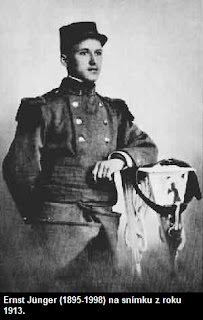Nos passados dias 25 e 26 do corrente mês de Setembro e pela primeira vez em cerca de 200 anos, o moinho de Sula, situado perto da cumeeira da Serra do Bussaco, testemunhou a passagem de grossas colunas de soldados Portugueses, Ingleses e Franceses (e Espanhóis...) que para lá convergiram com vista a realizarem mais uma encarniçada e violenta batalha campal.
O estampido dos mosquetes e o troar dos canhões foi audível, uma vez mais, por toda a Serra.
Para a cumeeira da Serra do Bussaco convergiu ainda uma vaga imensa de população, vizinha e não só, para testemunhar este fantástico evento e apoiar o esforço dos combatentes do Exército Luso-Inglês e ... do Exercito Imperial Francês, porquanto, como é óbvio, entre todos os participantes reinou o mais perfeito e pacífico convívio, que permitiu a todos desfrutarem desta importante comemoração, além de proporcionarem ao público assistente um evento magnifico.
E desta vez até o nosso amigo João Peixoto pegou em armas para defesa da Pátria! É verdade, meus amigos, o Peixoto vestiu uma farda do Batalhão de Caçadores nº 6, empunhou a uma carabina Baker e dedicou-se a apontá-la (sem nunca acertar...) aos milhares (na imaginação dele...) de soldados Franceses que subiam a Serra. Aliás, a certa altura pareceu-me que o Peixoto vinha a subir a Serra à frente dos Franceses, a grande velocidade, mas deve ter sido apenas uma ilusão de óptica. Ouvi também dizer que o Peixoto nunca mais se atrevia a meter noutra igual, por a carabina Baker se ter revelado muito mais pesada do que o seu pincel de modelista, mas deve ter sido apenas um rumor...
E foi desta maneira que ficou assinalado este importante episódio da nossa História nacional, em termos de recriação histórica. Os esforços de várias entidades públicas e privadas convergiram no objectivo de despertar nos nossos concidadãos, designadamente nas camadas mais jovens, um renovado interesse pelo nosso património histórico-militar e alertar para a necessidade de preservação do mesmo. É este também o objectivo principal de todos quantos se dedicam, nos seus tempos livres, a esta actividade.
É também devido um reconhecimento especial ao Município da Mealhada, aos seus funcionários, bem como aos elementos das forças de segurança presentes (Guarda Nacional Republicana) e demais colaboradores no evento, pelo interesse e dedicação colocados na realização do mesmo, com vista a que este corresse o melhor possível, como efectivamente sucedeu.
Os nossos camaradas e amigos de outras Nações manifestaram repetidamente o apreço que, uma vez mais, tinham em participar num evento em Portugal, não só pelo acolhimento que lhes era dispensado, como pelas qualidades organizativas demonstradas. É de realçar que houve elementos que fizeram deslocações, em autocarro, com a duração de cerca de 24 horas. Os nossos amigos das Astúrias tinham, por exemplo, uma viagem de regresso a casa com a duração de 9 horas!
Um bem haja a todos vós pela vossa presença e participação!
Aqui ficam algumas fotos e vídeos do evento, onde, além do mais, é possível visualizar a fuga, digo, a retirada do Peixoto.
slide show:
video RTP (minuto 12.40):
mais videos:
PC











































